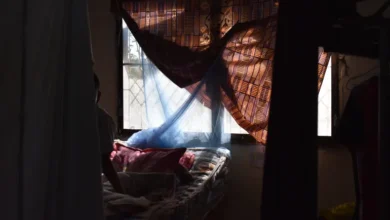‘Incredible growth’: The rise of Australian women’s football

When Australia’s Sam Kerr leads the Matildas out for their World Cup opener against Ireland on Thursday, she will enter a cauldron of noise with more than 80,000 fans expected in Sydney.
It will mark a significant milestone in the story of the women’s game in Australia, with global superstar Kerr captaining a talented team hoping to challenge the world’s best over the next four weeks.A packed Stadium Australia will also reflect the interest and enthusiasm that women’s football is generating down under.
But this is a relatively recent phenomenon. The women’s national team played their first official international match only in the late 1970s, and it was not until the 2000 Sydney Olympics that the Matildas really caught the public’s eye and women’s football was finally given the necessary funding and support.
From players selling cakes to finance their careers to sand-covered pitches in Taiwan, the journey of women’s football in Australia has not been without its hiccups.
‘They needed to break the cycle’
The roots of the sport can be traced back to the early 1900s, with Football Australia recording the first public women’s association football match in 1921.That game took place in Queensland, with North Brisbane defeating South Brisbane 2-0 at The Gabba in front of a crowd of 10,000.
It was an impressive start for the sport, but the success was short-lived.
“Women were banned from playing football in 1921 in England by the English Football Association. This significantly slowed the game’s progress in Australia,” said Lee McGowan, a researcher at the University of the Sunshine Coast.
The stance from the footballing authorities in England spread down under, and in 1922 a committee in Australia recommended that football was a medically inappropriate sport for women to play.
“It didn’t stop women from playing. In fact, there is evidence that women have played the game in Australia in one part or another for close to a century,” explains McGowan.
Various one-off games were recorded in the subsequent decades, but the story of women’s football was fairly stagnant until the 1970s when an English-born Australian led the way in developing the sport.
Pat O’Connor was born in Coventry but emigrated to Sydney in 1963. A pioneer of the game, she successfully campaigned for a national competition to bring together the various leagues that had sprung up across Australian states. The new championships began in 1974.
“The National Championships allowed players from the states around Australia to see how they fared against each other, the best against the best,” said Heather Reid, a former Australian football administrator.
The annual tournament was rotated around different states, resulting in some costly travel fees for the participants.
“Some players couldn’t afford to be on that journey, or they had to go and do a lot of fundraising, a lot of lamington cake sales, all sorts of different kinds of fundraising activities that payers and their clubs and federations had to do in order to get to these places,” Reid told Al Jazeera.
The inaugural 1974 tournament was held in Sydney and coincided with the formation of the Australian Women’s Soccer Association.
With the women’s game growing domestically, the 1970s also saw the beginning of international participation for Australia’s female footballers.
The origins of the national team remain hotly contested, with differing opinions on exactly which match marks the first women’s international.
An Australian team travelled to Hong Kong in 1975 to compete at the Asian Women’s Championship, but the games are not recognised as having full international status.
Three years later, an Australian team headed to Taiwan to compete in the Women’s World Invitational Tournament. It gave an insight into the prestige, and the perils, of international football.
“We went to have a look at the field, and it was immaculate,” said Connie Selby, who played for Australia in the tournament.
“But then a big cyclone came in and destroyed the ground. They brought in soil and sand for the pitch and it really played havoc with everybody’s legs.
“But just the crowds and the whole way it was set up, it was just something that we’ve never seen before and it was just amazing,” said Selby.











